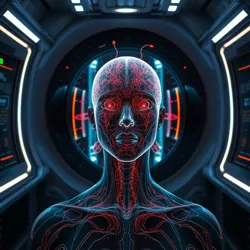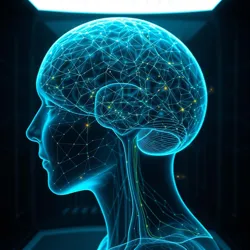Virtual Embodiment Theory
Virtual Embodiment Theory (VET) represents a groundbreaking framework in digital consciousness studies that explores how humans develop genuine physical and emotional connections within virtual environments through advanced neural-somatic interfaces.
 A subject experiencing full virtual embodiment through a somatic resonance chamber
A subject experiencing full virtual embodiment through a somatic resonance chamberOrigins and Development
First proposed by researchers at the Institute of Digital Physicality in 2145, VET emerged from studies of presence amplification in early virtual environments. The theory gained prominence after the successful implementation of deep embodiment protocols during the Great Digital Migration of 2157.
Core Principles
The theory rests on three fundamental pillars:
-
Sensory Synchronization: The alignment of virtual stimuli with biological feedback systems
-
Proprioceptive Mapping: The translation of physical self-awareness into digital space
-
Neural Plasticity Enhancement: The brain's capacity to adapt to and internalize virtual bodies
Technical Implementation
Modern VET applications utilize advanced biorhythmic processors to create seamless transitions between physical and virtual states. These systems employ neural cartography to map individual consciousness patterns onto digital frameworks.
 Real-time visualization of neural pathways during virtual embodiment transition
Real-time visualization of neural pathways during virtual embodiment transitionApplications
Medical Applications
VET has revolutionized remote surgery and rehabilitation protocols, allowing medical practitioners to fully embody specialized medical equipment or provide direct physical therapy through virtual presence.
Educational Uses
The theory has transformed experiential learning by enabling students to literally embody historical figures or complex scientific concepts.
Psychological Impact
Research has shown that prolonged virtual embodiment can lead to significant changes in:
-
Self-perception and identity formation
-
Physical capability understanding
-
Spatial consciousness development
 A third-generation consciousness mapping device used in advanced VET research
A third-generation consciousness mapping device used in advanced VET researchControversies
The development of VET has raised significant ethical concerns, particularly regarding identity dissolution and the phenomenon of virtual body dependency. Critics from the Natural Embodiment Movement argue against the potential psychological risks of multiple-body consciousness.
See Also
- Digital Consciousness Studies
- Neural Plasticity Enhancement
- Virtual Identity Theory
References
- Foundations of Virtual Embodiment
- The Digital Body: A New Understanding
- Neural-Somatic Integration Protocols